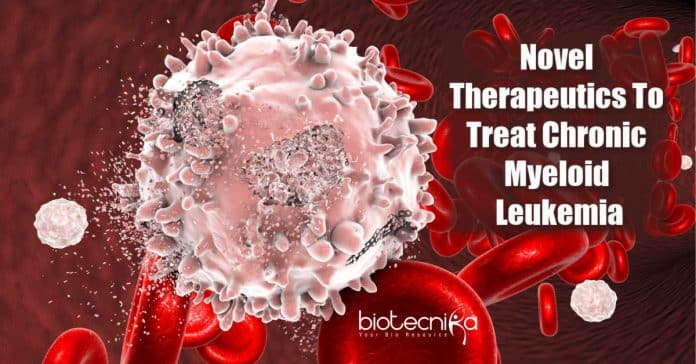Novel therapeutics against chronic myeloid leukemia
Leukemia regularly originates from the leukemic stem cell present in a tumor-promoting and shielding niche within the bone marrow. A new method to make these cells vulnerable by particularly displacing these cells from their particular niches has been developed by the researchers from the Max Planck Institute of Biochemistry, Martinsried, Germany.
As blood cells have minimal life-span, they are lost during blood loss or are used up during infections, and they have to be replaced continuously. The hematopoietic stem cells in the bone marrow ensure this supply.
By recombining chromosome 9 and 22, the hematopoietic stem cell undertakes a genetic mutation in chronic myeloid leukemia. Therefore, gene building blocks fuse, which would otherwise not be in contact with each other. The inaccurately assembled chromosome, known as the Philadelphia chromosome, harbors the construction manual for the BCR-ABL oncogene, making the leukemic stem cell to act selfishly and split at the cost of healthy blood stem cells.
No leukemia without Kindlin-3
A leukemic stem cell produces an environment called the malignant niche that assures its durability and propagation. The leukemic stem cell utilizes the integrins to connect itself to a scaffold of extracellular proteins – the
extracellular matrix and neighboring cells, to stay in the tumor-promoting niche. An intracellular protein – Kindlin, in the leukemic stem cell aids in the activity and function of integrins.Peter Krenn, the first author of the research, said that the only blood cells utilize the isoform Kindlin-3. Mice do not develop leukemia if they have leukemic stem cells that lack Kindlin-3. The leukemic stem cells can not connect themselves to their niche environment and are released into the blood from the bone marrow without Kindlin-3 and active integrins. Because they can not home elsewhere either, they stay in the blood. The leukemic stem cells do not have the necessarily required support, which they generally get from the niche, and die.
Kindlin-3 and CTLA-4 – Novel therapeutics
Differentiating a leukemic blood stem cell from a healthy blood stem cell was enabled by the novel discovery that the leukemic stem cells express a protein called CTLA-4 on their surface, which is absent in healthy blood stem cells. The CTLA-4 receptor was utilized as a shuttle to deliver a Kindlin-3 damaging substance into leukemic stem cells. Krenn stated that the CTLA-4 concisely exists on the cell surface and is later quickly recycled into the cell and, again, back to the cell surface. This made them to present a Kindlin-3 degrading siRNA into the cell by uniting it to a CTLA-4-binding RNA sequence – aptamer. From the bone marrow, the leukemic stem cell without Kindlin-3 is removed, and leukemia sheds its origin and runs out of fuel.
In their present research, Krenn had established novel therapeutics against chronic myeloid leukemia in mice. But, the principle of the treatment is widely legitimate. Preventing the cancer cells from having the capability to adhere and settle in tumor-promoting niches is brought about by the hindered Kindlin-3 production and the resulting loss of integrin function. He believes that this approach will also prevent the cancer cells of other kinds of leukemia from settling, which these diseases might become a lot more treatable.






























